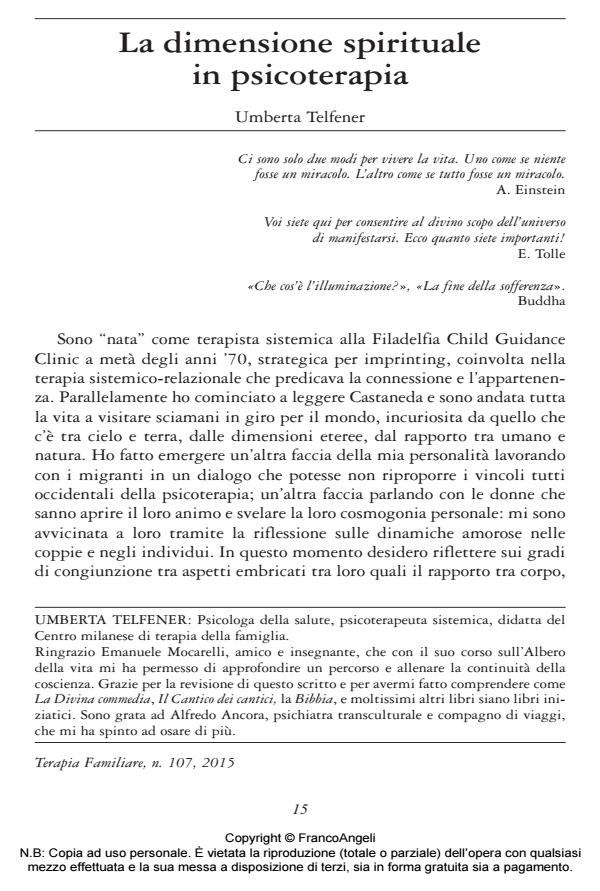La dimensione spirituale in psicoterapia
Journal title TERAPIA FAMILIARE
Author/s Umberta Telfener
Publishing Year 2015 Issue 2015/107
Language Italian Pages 22 P. 15-36 File size 114 KB
DOI 10.3280/TF2015-107002
DOI is like a bar code for intellectual property: to have more infomation
click here
Below, you can see the article first page
If you want to buy this article in PDF format, you can do it, following the instructions to buy download credits

FrancoAngeli is member of Publishers International Linking Association, Inc (PILA), a not-for-profit association which run the CrossRef service enabling links to and from online scholarly content.
I consider in the article the possibility of another dimension to which to pay attention in the relationship with clients. I propose the spiritual dimension as an aspect which we must at last consider and I hypothesize some operations which enhance its emergence in psychotherapy. This dimension has become essential for me as a point of arrival of my personal journey and it is made possible after a long time of discipline and rigor.
Keywords: Spirituality, clinical practice, epistemological rigor, clinical proceedings
- Systems thinking: fostering collaboration and connections to strengthen the field. A conversation with Umberta Telfener Deisy Amorin‐Woods, Umberta Telfener, in Australian and New Zealand Journal of Family Therapy /2024 pp.109
DOI: 10.1002/anzf.1577
Umberta Telfener, La dimensione spirituale in psicoterapia in "TERAPIA FAMILIARE" 107/2015, pp 15-36, DOI: 10.3280/TF2015-107002